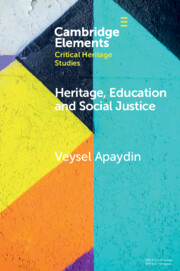Element contents
Heritage, Education and Social Justice
Published online by Cambridge University Press: 01 November 2022
Summary
- Type
- Element
- Information
- Online ISBN: 9781009052351Publisher: Cambridge University PressPrint publication: 01 December 2022
References
- 3
- Cited by

